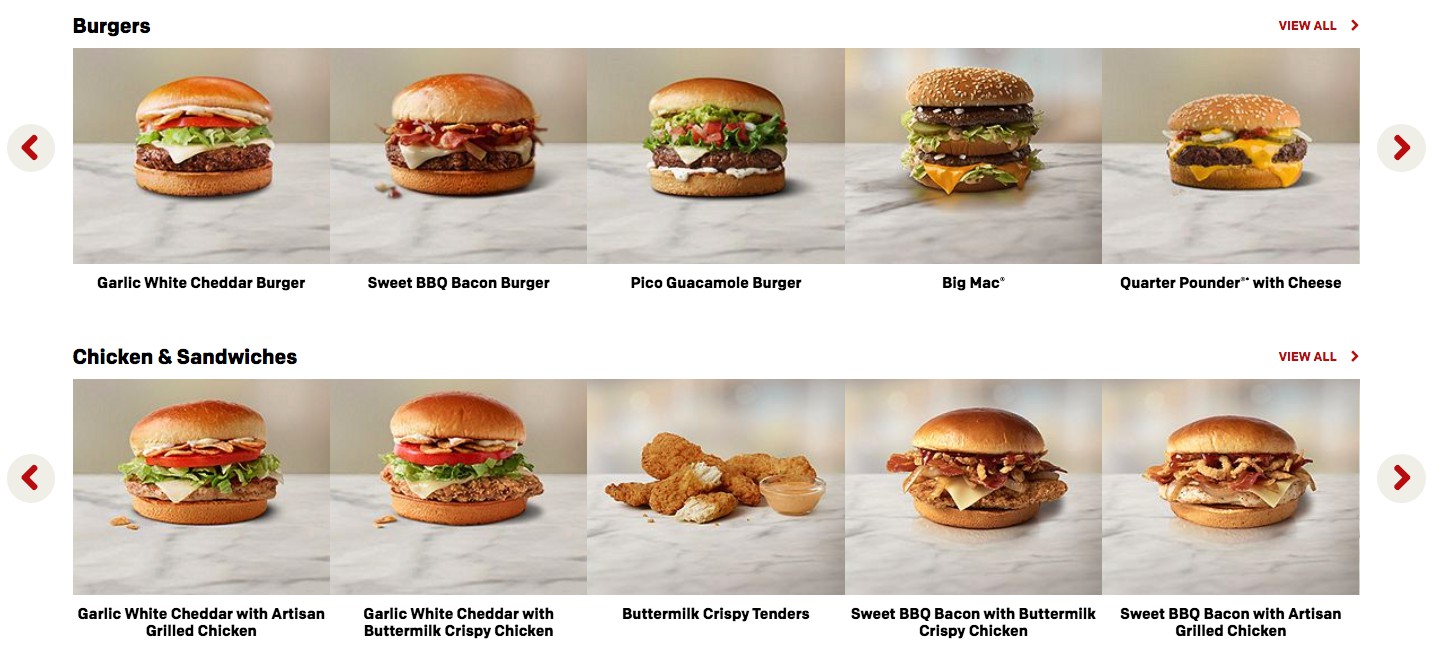
Start Using These Psychological Triggers In Your Copywriting
December 21, 2018
Psychology is a science founded in human motivation and behavior, and is essentially all about what makes people tick.
As a marketer, if you can understand what drives somebody and why someone may behave a certain way, the better you’ll be able to understand them, work with them, and ultimately influence them.
So let’s look at four proven psychological triggers, showing examples of each, and discuss how you can incorporate them into your copywriting and overall marketing.
Primacy and Recency Effect
Imagine you’re sitting in a classroom, and your teacher starts reading a list of about 20 or so words, telling you to memorize as many as you can. How many words do you think you could remember?
It turns out, most people only recall four or five words. But what’s even more interesting than the sheer number of words remembered are which words are remembered. Scientists refer to the phenomenon as serial positioning effect, but it’s also commonly called the primacy and recency effect.
The primacy and recency effect shows that when people are given a list of words to remember, the words at the beginning and the end of the list are remembered the most.
As marketers and copywriters, it’s important to keep this psychological principle in mind when drafting emails, social posts, landing pages, or any other type of marketing material. Because at the end of the day, your marketing messages will only be successful if people can remember them.
Instead of jamming all of your company’s services into one email, think about how you can best craft your message so it doesn’t get lost in a mix of 20 other words on the teacher’s list.
Coherence Markers
Generally speaking, writers and editors prefer to keep things short and sweet. If a word can be removed from a sentence, it’s usually a best practice to remove it for clarity’s sake.
But it turns out that certain words actually work wonders for adding clarity. (Using the word “but” at the beginning of the previous sentence is a prime example of this.)
These magic words are called coherence markers, and they are words (or phrases) that are used to connect ideas.
Below are two ads from Dove—one that uses coherence markers and one that doesn’t:
Dove Soft-Touch Ad #1
Your skin’s natural oils keep it silky and supple. As you age, it becomes less elastic and the production of oil slows down. Aging can cause dull, dehydrated skin. It’s essential to replenish the lost moisture with a natural, soothing alternative. Dove leaves your body clean and smooth. It contains 10 times more natural oil than regular shower gels.
Dove Soft-Touch Ad #2
Your skin’s natural oils keep it silky and supple. But as you age, your skin becomes less elastic and the production of oil slows down. That is why aging can cause dull, dehydrated skin. So it’s essential to replenish the lost moisture with a natural, soothing alternative. Dove leaves your body clean and smooth, because Dove contains 10 times more natural oil than regular shower gels.
Although some editors might suggest removing words like “but” and “so” in the second ad, research showed that using such words actually added clarity and even boosted persuasion of users.
So as you write, be sure that your ideas are tied together clearly—and use coherence markers to help with this. It’s important that your users understand the point you’re trying to get across without having to guess or come to their own conclusions.
Social Proof and the Halo Effect
Humans are naturally drawn to one another. But as consumers, we need a reason to buy into a particular product or service.
Now, if you’re experiencing a particular pain point, you might be forced to start searching for a product or service as an immediate remedy. But remember that around 90 percent of consumers are never experiencing a direct problem or challenge. Instead, they are living in a complete “unawareness” stage of the buyer’s journey (or funnel).
So what tactics can you use to create more awareness and buy-in from customers who have never heard of you?
One method is to use social proof and what’s known as the halo effect.
Social proof transfers confidence to your prospective customers and can help create that “feeling of missing out” that oftentimes sparks immediate action from users.
On a blog page, an example of social proof could be:
“Join over 16,000 people who receive bi-weekly marketing tips.”

If you have a service that helps people organize email, your product page might say:
“Nearly 1 million people have used X (our product) to better organize their email and get things done.”
So, what exactly is the halo effect?
The halo effect has many similarities to social proof in that it refers to our tendency to make judgments based on limited information. A classic example of the halo effect is classifying someone as a good person just because they’re attractive and well dressed. In marketing, the halo effect works a bit differently—but it’s omnipresent.
Think about McDonald’s for a minute.

The majority of its advertising talks about the dollar menu, pick $3 for $3, and other ways to eat for cheap, but McDonald's also sells its regular value meals, which after tax can range anywhere from $5 to $10.
So why does McDonald’s focus so much of their ad budget on promoting the dollar menu and special deals when it has a menu of over 140 products?
The answer lies in the halo effect.
By promoting inexpensive menu items (which is what McDonald’s has always been known for), McDonald’s other menu items can actually maintain a feeling of cheap in the consumer’s mind.
Apple is another company that has experienced the benefits of the halo effect. In 2005, the company heavily promoted its new product, the iPod, across TV, radio, and digital media. But even though almost every ad was promoting the iPod, Apple’s year-over-year sales for personal computers jumped 68 percent.
It wasn’t just the iPod that sold in 2005—nearly every other Apple hardware product saw a boost in sales.
So focus on the products and services you do really well and promote the heck out of them. You might just see your company experience its very own halo effect.
Mirror Neurons
If you’ve ever dealt with a knee injury (or any injury for that matter), you know how it feels when you see an athlete twist or turn in the wrong direction. I had ACL surgery two years ago, and to this day, I cringe whenever I see someone hurt their knee in any way. What’s funny is that to a certain degree, I can actually feel their pain. Or at least it seems that way. And that’s the power of mirror neurons.
Whenever we’re able to make someone feel something, we’re better able to influence their decision-making. And although most people think that decisions are based on rational thinking, the fact is that almost every decision we make is, to at least some degree, based on emotion.
The more we can create emotion, the more influence we have as marketers.
So how do you translate this to the field of marketing and specifically to the way you write? It starts by connecting with people’s pain points, interests, and motivations.
If you’re selling customizable homes, your marketing should talk about people finally being able to build their dream home, making memories with kids in the backyard, and having their own space to host family dinners. It shouldn’t talk about the type of concrete you pour or the type of machinery you use to build the house.
When you think about beer brands, how many of them are actually selling the beer and informing you on hops, fermentation, or the process of making the beer?
Okay, maybe a few craft breweries. But the majority of beer makers don’t mention their beer at all. Instead, the messaging is all about being with friends, making memories, and having a good time. Miller’s slogan doesn’t mention beer at all. Rather, it invokes a feeling: “It’s Miller time.”
People don’t want to know about the features of your product or the technical details of your software. They want to know how it solves their problem.
So think about what makes your readers tick and then write your copy in a way that shows you understand their needs and pain points.
Conclusion
There are many other psychological principles to incorporate into your copywriting, and this list just scratches the surface. But the point is that as marketers, we need to constantly be thinking about what drives people and then incorporate that understanding into our websites and content strategy.
It’s not your new software that customers crave, it’s the fact that it helps them solve their problems and keep their boss happy. Miller sells beer, but their messaging is about the time you’ll have with friends and making memories.
Take advantage of these four psychological triggers and use them to spark engagement. And remember to always be thinking about whether your messaging truly addresses the needs and motivations of your customers and prospects.

About the author
Christopher Hutchens was formerly an E-commerce Marketing Strategist at SmartBug Media based in Salt Lake City. Originally from Chicago, Chris graduated from Mizzou and worked in Columbia, Missouri as an interactive project manager for five years before coming to SmartBug. Outside of work, Chris loves to travel, snowboard, and play/watch basketball. Read more articles by Christopher Hutchens.









